[ad_1]
Here’s an idea for a 2024 resolution—please let the stoner myth of illiteracy die. Plenty of people who use cannabis also love to read, research, and dig up information. And cannabis as a topic and subject of photography, study, and discourse gets better and better every year. How many compelling books concerning cannabis were there 50 years ago, 20, even five? Now you can find weed in the pages of artistic coffee table books, memoirs, anthropological studies, and even etiquette guides.
The holidays are in full swing, Leafly nation, and we’d bet that you may have left some shopping until the last minute. Fear not! No matter what state you live in or who the intended recipient is, we’ve curated a list of books that show just how compelling cannabis and its adjacent plants can be.
By Jack Herer

All industries, all religions even, have seminal texts. Whether you grow cannabis, process it, like to consume it, or just know what it is, you can’t achieve a true understanding of this plant and its place in history without reading Jack Herer’s The Emperor Wears No Clothes. 1985 feels like a lifetime ago—because it was. Before any sort of cannabis legislation was on the books, when the War on Drugs let the ‘popo’ throw anyone with weed behind bars with impunity, Jack Herer was gathering information about a plant when there was essentially only word of mouth.
This is truly a first draft of cannabis history, complete with hemp and cannabis’ millennia-long legacy across the world and how it was eventually prohibited and assigned a Schedule 1. Since Herer’s passing in 2010, so close to Colorado and Washington pioneering adult-use cannabis, his son Dan Herer has worked to update the “Bible of Hemp” with contemporary references, sources, and legislation.
by David Bienenstock
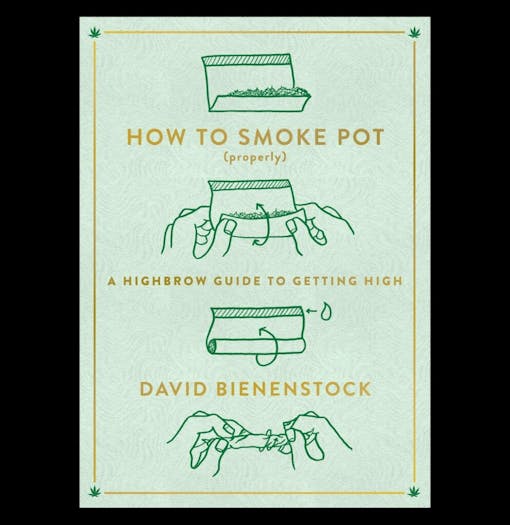
Author, editor, and Leafly contributor David Bienenstock has made himself a definitive expert in all things cannabis while at Vice and High Times, covering cannabis through lenses of policy, culture, and industry. Now, he would like to show you how to look like an expert at the sesh. Any person who has ever smoked weed has rolled a bad joint, or puffed too many times before passing, or overestimated their lung capacity with a bong. As cannabis, its accoutrement, and spaces to enjoy it become more accessible, so do the rules.
Shop highly rated dispensaries near you
Showing you dispensaries near
Bienenstock draws on his own encyclopedic knowledge as well as community experts to help readers understand how the cannabis diaspora impacts how we both cultivate and consume it, and to never take our easy access of today for granted.
By David Goodman

If there were any positive aspects of cannabis prohibition, one was that you developed a relationship with your weed guy. Even if he wasn’t the one growing, he knew who was, and what you could expect. In 2023, when nearly half the states in the union have legalized adult-use cannabis, you probably don’t think too hard about who’s growing your weed when you pick it up off the dispensary shelf. But as career photographer David Goodman knows, almost every good photograph starts with people. His new book, An American Cannabis Story, is less about cannabis plant portraits and more about the people cultivating it.
Goodman uses text and images to tell the story of Puffin Farm, a family-run and regenerative cannabis farm in Washington state that received one of the state’s first cultivation licenses. Founded by couple Jade and Ben, Goodman follows them and their team through an outdoor cultivation season, as well as the various products that cannabis can become, from jarred flower to forms of concentrates like hash and crumble. And yes, there are still many gorgeous “weed porn” shots.
By Seth Warner
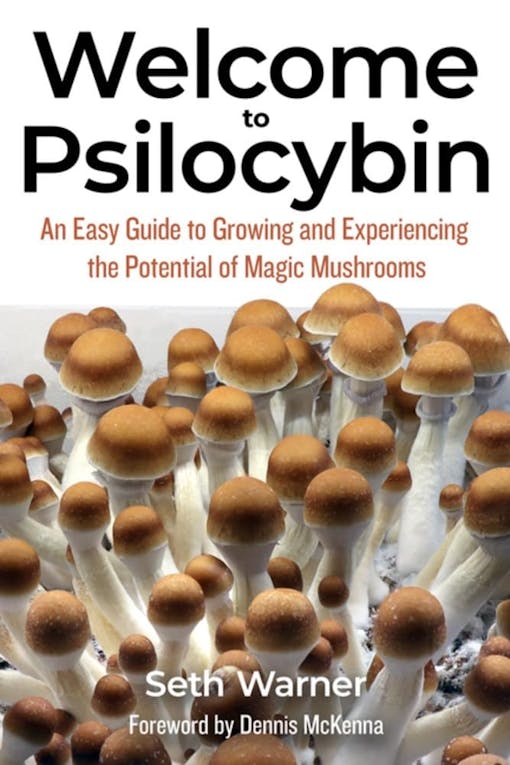
This book isn’t about weed, but it’s informed by weed. Seth Warner, founder of MycoRising, a psilocybin activist who helped revive the SF Psychedelic Society and worked directly to help decriminalize shrooms and other psychedelic fungi in Oakland in 2019, did not set out to write a book. He came to the Bay Area on a temporary trip, but stayed for its counterculture offerings. After working in the pre-Prop 64 cannabis industry, Warner turned to mushrooms, and through them found both community and a better version of himself. He also saw how commercialization had hindered people’s access to quality cannabis, and wanted to help people empower themselves via psilocybin medicine—teach a man to fish indeed.
“There’s a lot of stigma to break through, lots of hype and unrealistic expectations,” he tells Leafly. “[Legislation] that doesn’t point blank decriminalize is bogus. Let people grow their own!”
The book was conceived when the legendary Ed Rosenthal reached out with a collaboration proposal—and you don’t say no to Ed Rosenthal. With Rosenthal as editor, Warner offers an accessible guide to at-home mushroom cultivation, a “really good starting point” for people seeking a new layer of self-enrichment and via an age-old medicinal substance.
By Richard Betts with Rotem Raffe
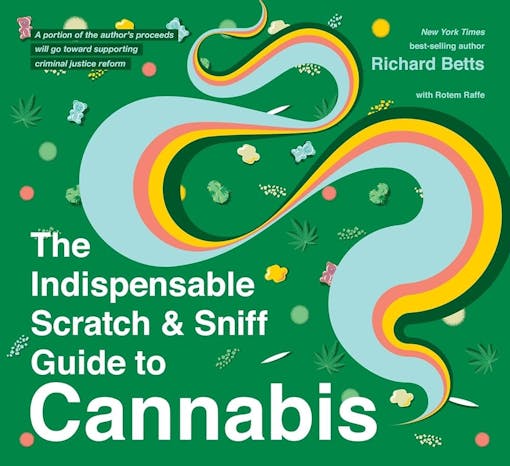
Sommelier, spirits developer, and author Richard Betts knows all about how smell informs a good glass of wine or a tumbler of whiskey. He’s helped create “scratch n sniff” books on these very topics that create a multisensory experience of the plant that eventually becomes a beverage. We know cannabis contains over 100 terpenes, and no two strains manifest the same profile of aromatic notes, so it’s no surprise that Betts put his scent sleuthing to some weed plants. Within these pages are nose-on knowledge about differentiating between hemp and cannabis, indica versus sativa plant types, and why Trainwreck doesn’t smell like Gelato.
By Jamie Evans
I think we can all agree now that the first generation of weed-infused beverages were duds—oily, separating, and not effective. They’ve gotten better now, but consumers still appear to prefer popping a gummy or baked good over cracking open a weed soda can. Most people have a signature drink—so if you can’t find it in stores, why not make it at home? Sommelier Jamie Evans offers readers multiple ways to easily and safely infuse any sort of beverage with your preferred weed strain, milligram potency, and ratio of cannabinoids.
As she told Leafly last year about infusing beverages, “We can approach cannabis from a gourmet angle, thinking about flavors, aromas, and how you can incorporate it into a meal,” she told Leafly. “At home, it caters to what you need. “You can infuse bitters, simple syrup, things we normally combine into a cocktail, and tie them into a drink pretty seamlessly.”
By Broccoli Publishing
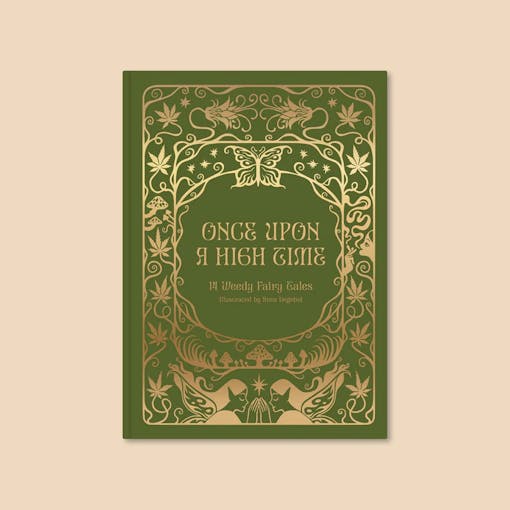
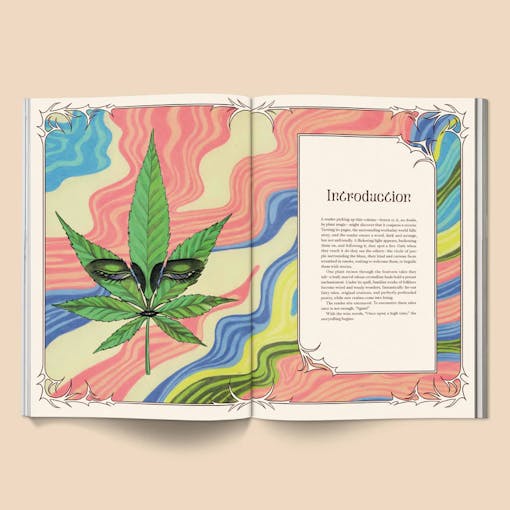
Didn’t you ever wonder, while reading the fairy tales of yore, that some of these magical creatures really needed a smoke break? Would the Big Bad Wolf want to eat Little Red Riding Hood if he had a toke beforehand? The cannabis publisher Broccoli has always brought a whimsical lens to all facets of cannabis media, from their gorgeous quarterly magazine to more recent endeavors in psilocybin and cat content. Their books are glossy, cheeky, and above all—fun. Once Upon a High Time: Weedy Fairy Tales presents over a dozen illustrated tales of princesses, woodland creatures, and mischief makers, and they’re all puffing on some jazz cabbage.
See also: Weed is a Flower, a colorful photography book that arranges cannabis plants alongside traditional bouquet flowers to show just how beautiful it can be, even if you don’t consume it.
By Dan Michaels and Erik Christiansen

Dan Michaels, the author of Higher, knows that cannabis lore can sometimes get the best of us, and primary sources are not always forthcoming. In his visual history of cannabis, Michaels and photographer Erik Christiansen present an overview of cannabis’ global legacy, some horticulture lessons, endocannabinoid science, and weed geography.
The book’s main draw, however, are the plethora of strain portraits and biographies that pay homage to landrace classics like Acapulco Gold, steadfast classics like Chemdog, and newer innovations like Runtz. Sprinkled throughout are histories by cannabis breeders and historic figures, such as the 420 creators The Waldos, Mila Jansen the Hash Queen, and breeders like Compound Genetics, Humboldt Seed Co, and Symbiotic Genetics.
By Alia Volz
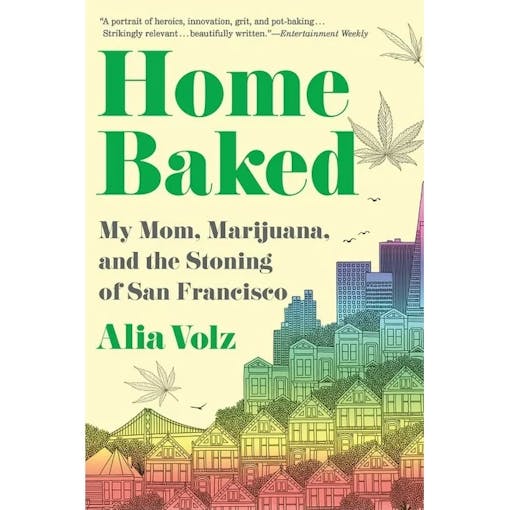
Cannabis legalization and the fight to recognize its medical legitimacy began in San Francisco, and it began thanks to the enduring efforts of people like Mary Jane “Brownie Mary” Rathbun and other women who worked to connect people with cannabis during the AIDS crisis. Alia Volz’s mother Meridy ran her own nudge-nudge, wink-wink brownie business, Sticky Fingers, delivering thousands of infused brownies across the city on a monthly basis.
“I grew up with this experience of being from such a different family than other people had…that I was never able to share because it would get my folks in trouble,” she says in an interview for the TOTAL SF Book Club. “The cannabis community really has a culture of storytelling. So once you can trust somebody, the floodgates are open.”
The book not only chronicles her parents’ involvement in the nascent cannabis industry, but draws from dozens of interviews with other members and historical research that contextualizes the personal within the broader cannabis movement. It took her over a decade to complete, but demonstrates how cannabis has always been about community.
By Ed Rosenthal
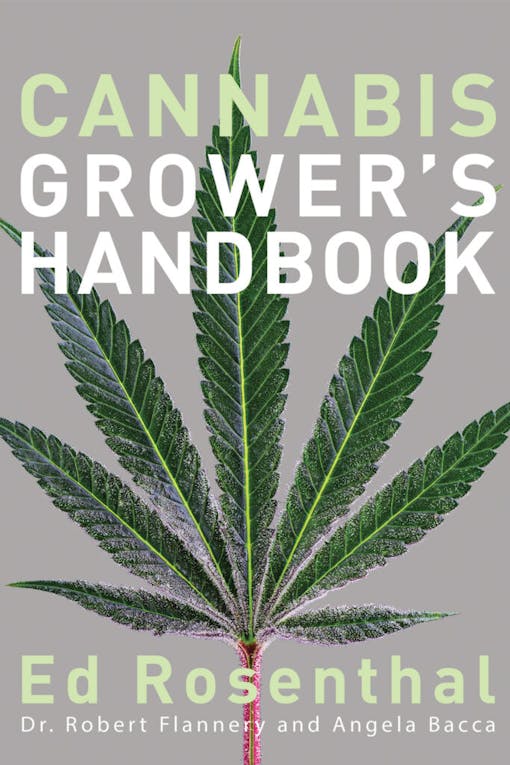
We would be remiss not to include the Godfather of “do-it-yourself” cannabis cultivation. Ed Rosenthal came to the Bay Area from New York in the 70s to help push for cannabis reform, and stayed because, well, it rocks. He’s published a whole shelf of books over the last 40+ years, each of which bring something new to the cannabis conversation (spoiler alert—our own David Downs has helped him write a few!).
His latest, the 2021 Cannabis Grower’s Handbook, is like the latest iOS update, giving you the best information that builds on prior knowledge. As Rosenthal tells us, “Why rewrite a classic? Methods of cultivation have changed as technology has advanced, improving quality and consistency. If my other books helped you grow, Cannabis Grower’s Handbook will take you to new highs.”
[ad_2]
Source link

